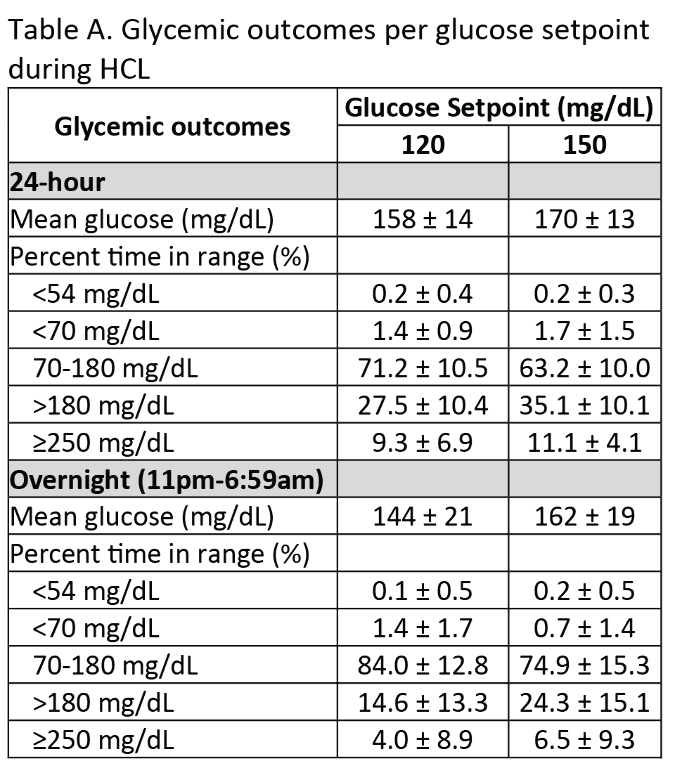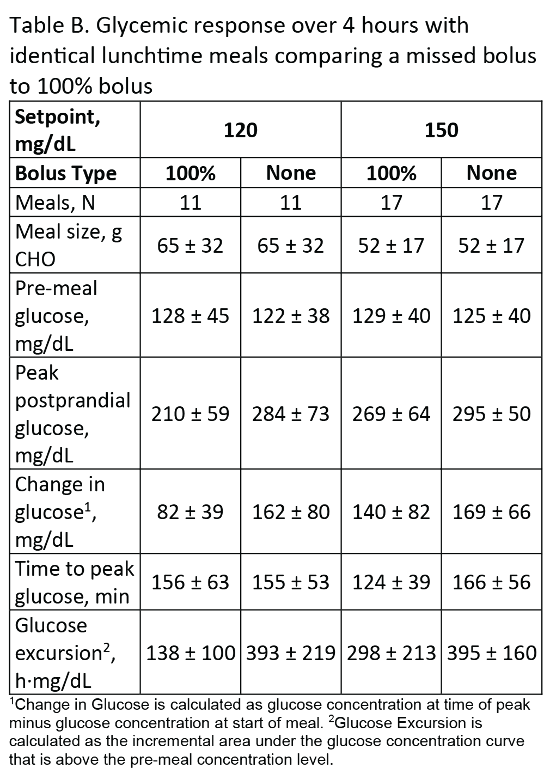PERFORMANCE OF OMNIPOD PERSONALIZED MODEL PREDICTIVE CONTROL ALGORITHM WITH MULTIPLE SETPOINTS AND MEAL AND EXERCISE CHALLENGES IN ADULTS AND ADOLESCENTS WITH TYPE 1 DIABETES
- Gregory P. Forlenza, United States of America
- Gregory P. Forlenza, United States of America
- Bruce A. Buckingham, United States of America
- Jennifer Sherr, United States of America
- R. Paul Wadwa, United States of America
- Alfonso Galderisi, United States of America
- Laya Ekhlaspour, United States of America
- Cari Berget, United States of America
- Liana Hsu, United States of America
- Melinda Zgorski, United States of America
- Joon Bok Lee, United States of America
- Jason O’connor, United States of America
- Bonnie Dumais, United States of America
- Todd Vienneau, United States of America
- Lauren Huyett, United States of America
- Trang Ly, United States of America
Abstract
Background and Aims
In preparation for future home studies, the safety and performance of the Omnipod hybrid closed-loop (HCL) personalized model predictive control (MPC) algorithm were assessed at multiple glucose setpoints and with meal and exercise challenges in adults and adolescents with type 1 diabetes (T1D) using an investigational device.
Methods
A 96-h HCL study was conducted in a supervised free-living hotel setting. Participants aged 12-85y with T1D and A1C<10.0% using CSII or MDI were eligible. At HCL start, the glucose setpoint was 150mg/dL, and was lowered to 120mg/dL after 48h. The system was stress-tested with 2 missed lunch boluses, high fat dinners, and daily moderate-intensity exercise. Endpoints were mean glucose and percentage time <54, <70, 70-180, >180, and ≥250mg/dL at each glucose setpoint. The 4-h glycemic response was assessed comparing a missed or 100% bolus for identical meals.
Results
Participants (n=20) were (mean±SD): age 28.5±15.0, T1D duration 16.7±12.2y, and A1C 7.4±1.0%. Glycemic outcomes at each glucose setpoint and following the missed meal bolus challenge are reported in Tables A and B, respectively. Despite 2 missed meal bolus challenges (20-136g carbohydrate), percentage time from 70-180 mg/dL was 71.2±10.5% with a setpoint of 120mg/dL, and 63.2±10.0% with a setpoint of 150mg/dL. Mean glucose was 158±14mg/dL and 170±13mg/dL at the 120mg/dL and 150mg/dL setpoints, respectively.
Conclusions
The Omnipod personalized MPC algorithm performed well and was safe in adults and adolescents with T1D when stress-tested at 2 different setpoints under challenging conditions. These data support exploration of lower system setpoints, as well as future home-based trials.

